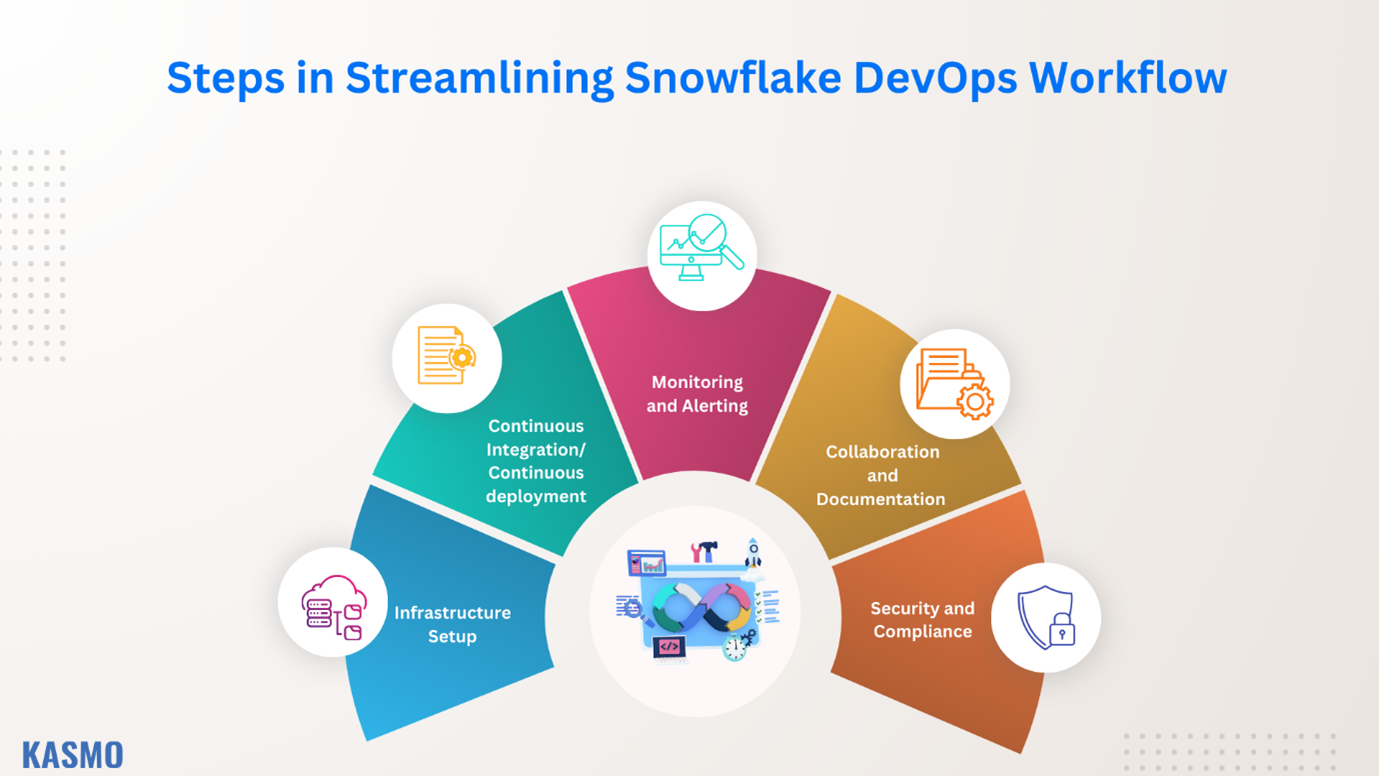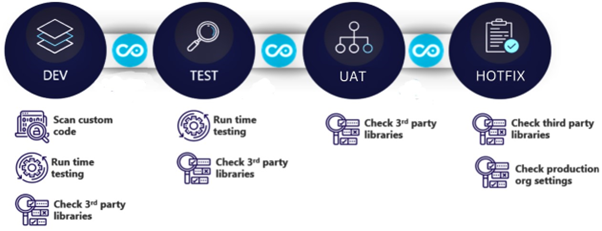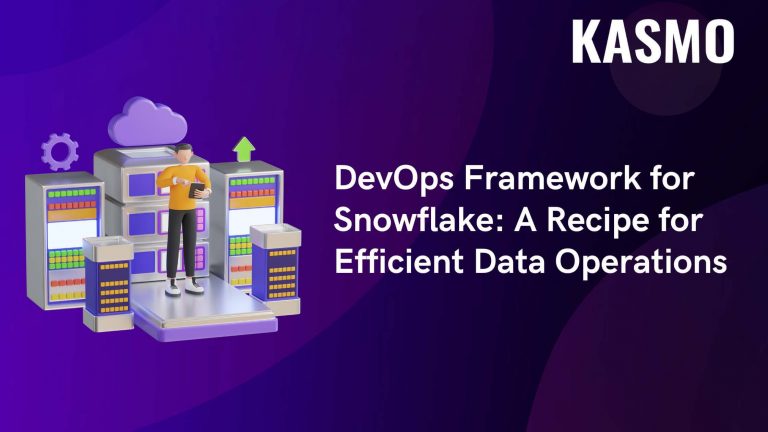Today, businesses are highly data-driven, making the need for reliable and efficient data management an imperative. Companies are increasingly focusing on enhancing their data management and data warehousing capabilities to avoid possible silos in operations. Several frontrunners have adopted platforms like Snowflake, a cloud-based data warehousing platform designed to store and analyse large volumes of data in a scalable and efficient manner. While Snowflake’s cloud-native architecture offers unmatched flexibility and scalability for data warehousing, it could also introduce complexities in managing and automating tasks within the Snowflake environment. This is where the role of a streamlined DevOps framework comes into play. A well- defined DevOps framework is consistent and reliable, facilitating organizations in a smooth deployment process.
Streamlining DevOps Framework for Snowflake: What’s in It for You?
Data demands of businesses are constantly evolving. Snowflake’s advanced cloud data management capabilities enable organizations to coherently leverage their data to meet stakeholder demands. However, complexities in managing and automating tasks within Snowflake makes it essential to have a well-defined DevOps workflow in place.
Streamlining DevOps framework for Snowflake involves creating a well-defined and automated pipeline for managing and delivering data operations. This helps organizations to ensure that development, testing, and deployment of changes within the Snowflake environment are done seamlessly with minimal manual intervention. Also, implementing DevOps best practices is an essential step in maximizing the efficiency and agility of your business’s data operations.
Key Components of an Efficient Snowflake DevOps framework
An effective DevOps framework involves an automated Continuous Integration and Continuous deployment (CI/CD) pipeline that enhances Snowflake Object Management and promotes consistency and reliability in the deployment process. Integrating version control, automated synchronization, and comprehensive testing empowers data teams to systematically manage Snowflake database objects. This results in more robust data warehouse systems.
The key components of an efficient Snowflake DevOps framework include:
1. Infrastructure as a Code (IaC)
Use Infrastructure as Code (IaC) to describe your Snowflake setup. With IaC, you can define your data warehouses, databases, roles, and users in code and keep track of changes. This ensures that when you create Snowflake resources, everything is consistent and easily reproducible.
2. Continuous Integration (CI)
Businesses must implement continuous integration in their Snowflake DevOps workflow. It is vital to automate and test changes such as SQL scripts, data transformations, and database schema modifications. This enables you to catch errors early and ensures that changes do not introduce regressions.
3. Continuous Deployment (CD)
Automating deployment of the approved changes to the production Snowflake environment minimizes manual intervention. This process significantly reduces the chances of errors during deployment.
4. Monitoring and Alerts
Automated monitoring of the Snowflake environment is vital for businesses. This enables you to stay vigilant on resource consumption, query performance, and data quality. It is also important to configure alerts to notify in case of any anomalies in real-time.
5. Version Control Systems
Organizations can leverage version control to manage changes and collaborate effectively with their team. Version control systems such as Git should be used to manage changes to the Snowflake environment. This approach promotes collaboration among team members, creates a comprehensive audit trail for all modifications. It also enables easier debugging and troubleshooting for companies and provides a comprehensive history of their snowflake environment.
6. Security and Compliance
Implementing access controls, encryption, and auditing to ensure that your Snowflake environment complies with security and regulatory requirements.

Snowflake’s Latest DevOps Capabilities:
Snowflake’s DevOps capabilities focus on providing a seamless and collaborative environment for development and operations teams. The Git integration in Snowflake facilitates seamless interaction with files in Git repositories within the database. The Database Change Management feature enables the adoption of “configuration as code” approach for managing Snowflake objects. By employing declarative target state definitions, users can ensure consistency across development, testing, and production deployments without risking data loss.
These DevOps features in Snowflake empower users to evolve database states using files versioned in a Git repository, eliminating the need to manually write ALTER statements. The process is further exemplified through a file-based object lifecycle in a controlled Git environment.
Snowflake’s DevOps capabilities aim to streamline the development and deployment processes, enhance collaboration, and provide tools for monitoring, security, and scalability in a data-intensive environment.
The Kasmo Advantage
Kasmo is a trusted Snowflake Select Services Partner. Our DevOps framework for Snowflake incorporates industry best practices and is designed to overcome common challenges in automating tasks within the Snowflake environment. Kasmo’s DevOps pipeline begins with capturing of Snowflake object definitions from the Development environment and storing them in a Git repository dedicated to Development branch.

This framework automates the process of moving code changes from development (dev) to testing (test), user acceptance testing (UAT), and ultimately to production (prod). It records code changes, uploads them to Git, deploys them to Snowflake databases across various environments, records deployment details, checks deployment status, and notifies stakeholders through email.
Connect with an expert and learn more about the full range of Snowflake features that can be tailored to your specific needs :

